Living an environmentally-friendly lifestyle is sometimes misunderstood, mainly because it's costly, inconvenient, and demanding.
But in reality, choosing to live in a sustainable way is relatively simple; all it takes is one slight adjustment at a time to make a big difference. In this post, we’ll share some eco-friendly tips to help you get started.
The average home uses 9% of its energy on lighting.
Now, if you want to lower your energy bill and environmental impact from all your light bulbs, using LED bulbs is a cheap and easy alternative. It also provides high-quality light output and emits less heat, unlike standard bulbs, which might make your air conditioner work harder.
LED bulbs have also evolved to fit recessed lighting and dimming controls.
Not only are plastic water bottles uneconomical, but it's also harmful to the environment. Plastic production requires three times the water in a water bottle to make one, yet 80 percent aren't recycled.
So instead of constantly buying a plastic bottle, get a reusable, portable water bottle.
Not only will you save money by reusing a water bottle, but there will also be fewer plastic bottles needed.
The good thing about having recycle bins is that it makes you more aware of recycling glass bottles, jars, paper, and other objects. To simplify recycling and composting, have trash and recycling bins in more than just the kitchen.
Meanwhile, a compost bin will let you eliminate leftovers and give your plants free fertilizer.
Tip: Make sure that the compost bin has a tight cover and a secure hatch at the bottom for extracting fertilizer when ready to use to avoid pests.
Reducing meat consumption can create a significant impact on the environment as it helps reduce GWP emissions.
In case you didn't know, more than 30 percent of the Earth’s surface is being used to raise and support livestock.
“The livestock sector accounts for 9 percent of CO2 deriving from human-related activities but produces a much larger share of even more harmful greenhouse gasses. It generates 65 percent of human-related nitrous oxide, which has 296 times the Global Warming Potential (GWP) of CO2," according to research by the United Nations.
Other than the GWP gas emission, consuming fewer farm animals means having more land to use for recreation.
So instead of having meat-only meals, consider consuming more vegetables and seafood.
Choosing to live in an eco-friendly home setup doesn't mean leaving paper towels for good. It's about using old shirts or fabric for cleaning or drying instead of buying a dozen paper towels.
Regular toilet paper is not eco-friendly because everyone uses 100 rolls yearly.
If you want to switch to an eco-living lifestyle, you should use bamboo toilet paper for the sake of environmental sustainability since there are bamboo species that grow 36 inches in 24 hours.
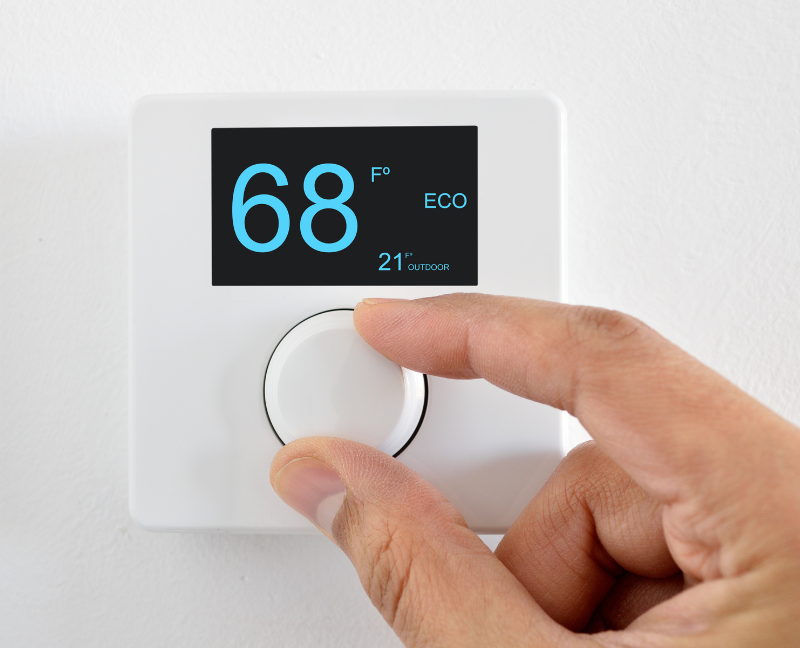
Monitor and control your HVAC systems with a programmable thermostat. Smart thermostats lower utility bills and make homes greener. It also saves energy, which, for some, is the main reason to upgrade.
A smart thermostat lets you arrange your HVAC to operate less while you're away, saving you energy by cooling your home just when you're home.
You can set your digital thermostat to turn on right before family members arrive to cool your home to 72 degrees from the minute you enter. Nest claims 15 percent cooling savings and 10–12 percent heating savings.
Turning them off while leaving a room, especially when leaving the house, saves energy and money. However, the electricity saved by turning the electric lights off depends on the bulbs used.
For instance, incandescent bulbs are energy-inefficient. Before producing light, these lights convert electricity into heat. It provides 90% heat and 10% light. Thus, turning off incandescent light bulbs saves energy at home.
So if you leave your house for over 15 minutes, be sure to switch them off to save electricity. The method also extends CFL bulb life.
Meanwhile, LED bulbs won't be affected by turning them on or off.
One of LED lamps' key features makes them perfect for residential energy conservation. They can also be turned on and off automatically and brightened instantaneously with sensors.
Energy Star estimates that washing machines consume 90% of their energy to heat water. Washing with cold water can reduce carbon dioxide emissions by 1,600 pounds annually.
Instead of heating, run your washing machine on cold. Not only does this cut carbon dioxide emissions, but it also preserves your garments, as hot water can fade colored clothes.
Unless you have oil stains, there's no use in washing on hot. You can try warm water if cold doesn't work. Still better than hot water; it cleans better than cold water.
The EPA found that dryers use more energy than refrigerators, washers, and dishwashers, and line drying can cut primary appliance energy use by one-third.
Fresh-air line-drying is remarkable. Also, drying clothes and bedding on a rack outside instead of in the dryer will prolong their life. Establishing a drying rack on your balcony and opening the windows will let the sun dry your clothing faster if you don't have a garden or backyard.
Home cleaning supplies contain the most potent bacteria-killers. These products are designed to kill almost all organisms. Man-made poisons harm the ecosystem and kill animals and plants once they enter our waterways via sewers, and these are just some of the reasons why opting for natural cleaning ingredients is a must.
Using organic cleaning products might be a better option but it can be costly. What you can do instead is to use DIY cleaning products made with vinegar, baking soda, and lemon juice. Not only is this eco-friendly, but it also helps reduce packaging waste and household chemical pollution.
Canvas bags replace inefficient plastic and paper bags at most stores. Although canvas bags are inexpensive, they are convenient. Canvas bags are more robust, hold more than plastic or paper bags, and help store and transfer objects.
Even if you don't use canvas bags, reusing plastic bags benefits the environment. Put plastic bags in tiny trash cans around the house or recycle them. Every little bit helps.
These are just some ways to make your home eco-friendly. Watch out for Part 2 to learn more tips.
In today's world, energy efficiency is not just a buzzword; it's a smart way to save money, reduce your environmental impact, and make your home more comfortable. Whether you're looking to lower your utility bills, reduce your carbon footprint, or enhance your home's value, creating an energy-efficient home is the way to go. Today, let’s explore a range of tips and strategies to help you achieve an energy-efficient home.
Before delving into practical tips, let's take a moment to understand why energy efficiency is crucial:
Lower Utility Bills: An energy-efficient home consumes less energy for heating, cooling, and electricity, resulting in substantial cost savings.
Reduced Environmental Impact: Lower energy consumption translates to reduced greenhouse gas emissions, helping combat climate change and protect the environment.
Enhanced Comfort: An energy-efficient home is a more comfortable home. Proper insulation, sealed gaps, and efficient heating and cooling systems provide consistent indoor temperatures.
Extended Equipment Lifespan: Energy-efficient appliances and systems experience less wear and tear, leading to longer lifespans and fewer replacements.
Increased Home Value: Energy-efficient features can make your home more appealing to potential buyers, potentially increasing its resale value.
Now, let's dive into the practical steps to make your home more energy-efficient.
Start by identifying areas of improvement. Hire a professional or conduct a DIY energy audit to pinpoint where your home is losing energy. Common culprits include inadequate insulation, drafty doors and windows, and outdated appliances.
Proper insulation is key to maintaining a comfortable temperature indoors. Consider adding or upgrading insulation in your walls, attic, and floors. It's a one-time investment that yields long-term savings.
Gaps and cracks in doors, windows, and walls can lead to energy waste. Seal these areas with weatherstripping or caulk to prevent heat loss and drafts.
When it's time to replace appliances, choose ENERGY STAR-rated models. These appliances are designed to use less energy while providing the same level of performance.
Replace incandescent bulbs with energy-efficient LED bulbs. They last longer and use significantly less energy, reducing your lighting costs.
A smart thermostat allows you to control your home's temperature remotely and program it to reduce heating or cooling when you're not at home, further reducing energy consumption.
Consider installing solar panels on your roof. They can significantly reduce your reliance on grid electricity, leading to substantial savings over time.
Double-paned or triple-paned windows offer better insulation, preventing heat loss in the winter and heat gain in the summer.
Install low-flow faucets and showerheads and consider a tankless water heater to reduce your hot water consumption.
Simple changes like turning off lights when not in use, unplugging electronics, and maintaining your HVAC system can also contribute to energy efficiency.
Creating an energy-efficient home is a wise investment that pays off in numerous ways. Lower utility bills, a reduced environmental footprint, improved comfort, and increased home value are just a few of the benefits. By implementing these practical tips and strategies, you can transform your home into an energy-efficient oasis, all while contributing to a more sustainable and eco-friendly future.
A home is more than just a place to live; it's your personal sanctuary. It's where you seek comfort, relaxation, and refuge from the outside world. While the concept of coziness is subjective, there are certain built-in features that can universally contribute to a warm and inviting atmosphere. In this post, we'll explore some key elements that can transform your space into the ultimate haven.

Fireplace
Few features can match the charm and warmth of a built-in fireplace. Whether you opt for a traditional wood-burning hearth or a modern gas variant, a fireplace can be the centerpiece of your cozy living space. Its crackling flames and radiant heat make it a focal point for gatherings and a source of comfort on chilly nights.
Exposed Wooden Beams
Exposed wooden beams on ceilings or walls can infuse your home with a rustic and inviting ambiance. These architectural elements add character, making your space feel more grounded and cozy.
Built-In Shelving
Custom-built shelves or bookcases are not only practical but also contribute to the overall coziness of your home. Display your cherished books, collectibles, or family photos, turning these built-in shelves into a reflection of your personality.
Tranquil Window Seat
Imagine having a peaceful corner with a view and natural light where you can curl up with a good book. A built-in window seat offers just that. It's a tranquil nook that allows you to enjoy the outdoors from the comfort of your home.
Bay Windows
Bay windows provide a perfect spot for a cozy seating area or a charming dining nook. The additional space and the natural light they bring can make any room feel warmer and more inviting.
 Crown Molding
Crown Molding
Elegant crown molding adds a touch of timeless beauty to your home. It creates a sense of refinement and coziness that can transform any room.
Wainscoting
Wainscoting on your walls can introduce a sense of traditional warmth and style. It adds texture and character to your living spaces, making them feel more inviting.
Built-In Blinds
Built-in blinds or window treatments offer not only privacy and light control but also a polished and cozy look. They seamlessly blend with the architecture of your home.
Hidden Storage Solutions
Built-in storage solutions are more than just practical; they keep your space clutter-free and organized. Whether it's under-stair storage, hidden closets, or built-in cabinets, these features add convenience and a tidy, inviting environment.
Custom-Built Kitchen Island
A custom-built kitchen island can be the heart of your home, providing a central gathering place, additional counter space, and storage. It adds functionality and style to your kitchen, making it a cozy hub for cooking and socializing.
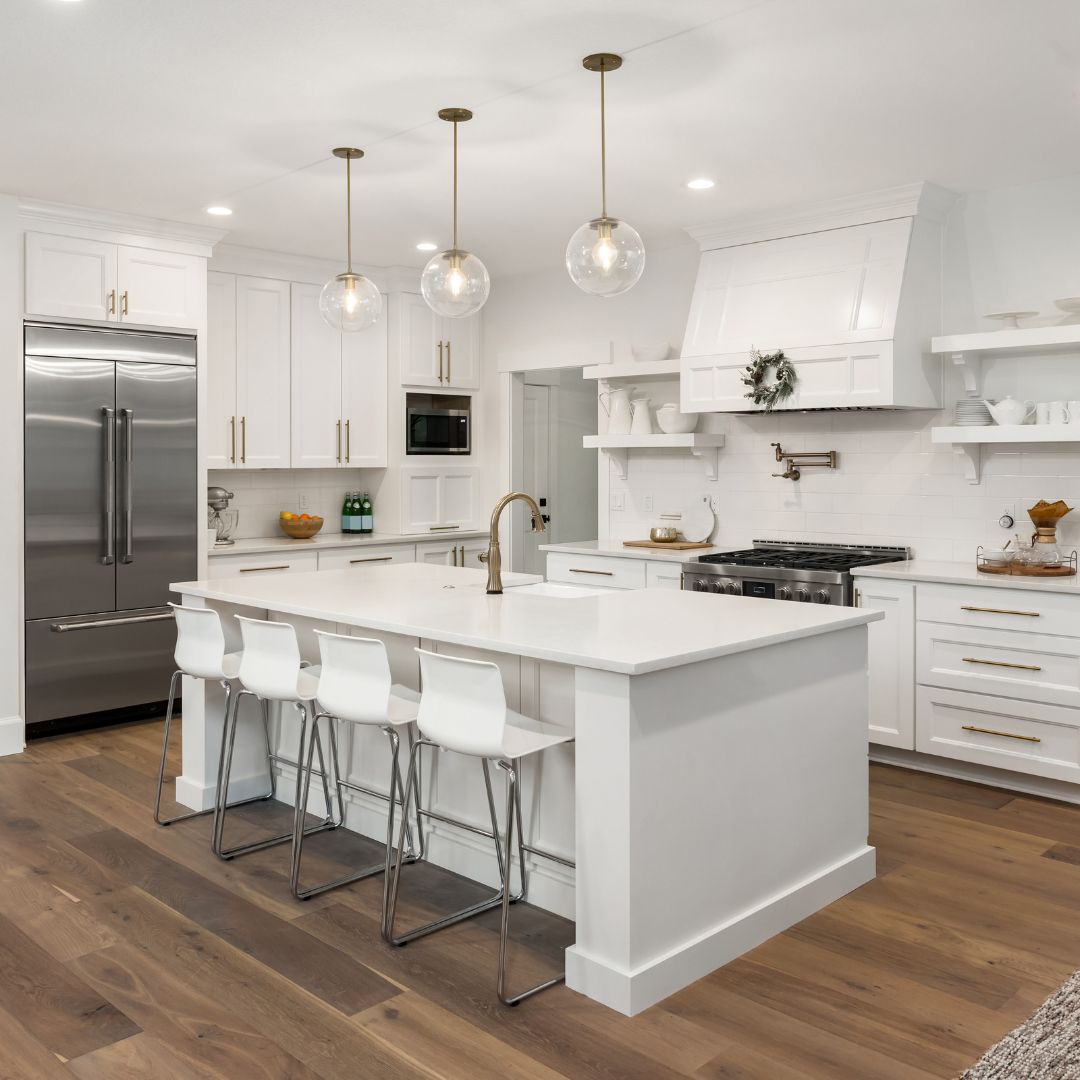
Incorporating these built-in features into your home can have a transformative effect, creating an environment that is both stylish and welcoming. Your living space will become more than just a house; it will be a true sanctuary of comfort and coziness.
Enjoyed this content? You might also find these articles worth your time:
As climate change worsens, more people want to live sustainably. This has increased demand for eco-friendly homes. According to Redrow, 82% of purchasers would pay more for eco-friendly homes than a typical one.
The greener home buyers could be a millennial looking to move out and start a family or a retiree looking for a simple one-floor home suitable for their needs. Eco-friendly homes are prevalent across all ages.
This post might answer one of the most frequently asked questions: "Why are eco-friendly homes important to the enormous and expanding population of environmentally aware prospective home buyers?"
Better insulation, upgraded HVAC systems, smart thermostats, and renewable energy generation make eco-friendly homes more energy efficient. Besides energy efficiency, they have other environmental benefits.
Sustainable building materials make eco-friendly homes environmentally friendly. These homes reduce carbon emissions and pollution using wood frames, low-emissions concrete, and recycled materials. Green homes use sustainable resources and generate fewer waste products through efficient design and construction.
Eco-friendly homes utilize less water than standard homes through rainwater capture, greywater reuse for irrigation and landscaping, low-flow faucets, and other water-saving appliances.
Promoting eco-friendly homes with all these benefits will help buyers see that they can save money on bills while preserving the environment.
Buying an eco-friendly home has many financial advantages:

You should 'cast the net wide' when selling eco-friendly homes because many demographics want them. These marketing strategies target homebuyers of all ages.
Older homebuyers, people may see less TV, social media, email, or radio advertising than younger generations. Traditional advertising, like newspapers, magazines, and billboards, could get to this audience better. Use recycled paper and inks for mail-out flyers or other resource-intensive advertising to reach your target demographic.
Digital marketing targeting youth has infinite potential. Remember to target adverts to reach all internet users. Google Ads lets you choose which pages your ads display on, making prospecting easy.
Social media marketing also works well for younger audiences. Instagram, Twitter, and Facebook all offer ad services and are popular with "just-moving-out" to "middle-aged buyers." Use many channels to reach a wide range of green homebuyers.
Trust and authenticity are key to sales. Thus, targeting the environmentally-friendly housing market will demonstrate to eco-conscious buyers that you are a sustainable real estate business. Today's market offers several sustainable home layouts and aspects to specialize in.
Prefabricated modular homes are increasing in popularity in green housing. These properties are 'prefab,' indicating factory-built and brought to the site. Modules can be assembled like LEGO blocks; thus, adding rooms doesn't require a costly rebuild. Due to their cost-effectiveness and adaptable design, modular prefab buildings are considered the future of eco-friendly homes.
Retrofitted homes are another green housing niche. Traditional homes are retrofitted with sustainable materials and energy- and water-saving features. Eco-friendly retrofits offer financial savings and health benefits without the high expense of new green homes.
These new green homes exemplify how the real estate business is becoming more sustainable and supporting green housing. You can lead real estate trends and stand out by specializing in sustainable housing or energy efficiency.
The saying "health is wealth" applies to most people prioritizing their health. Buyers will be pleased to learn that eco-friendly homes provide several advantages for both mental and physical health.
Eco-friendly homes utilize low- or no-VOC paints. Many paints and interior furnishings contain VOCs, which evaporate or "off gas" into the air. Buy a sustainable home from a reputable agency to avoid VOC-related health issues and live better. Smog Armor's no-VOC paints are ideal for exterior and interior painting.
Sustainable homes employ natural sunlight for passive heating and lighting energy reduction. Natural light boosts mood and promotes sleep.
What are the other reasons why you think eco-friendly homes are a must? Feel free to share them in the comment section!
In the first part, we've listed 7 home prepping activities you can do this fall. This includes cleaning your gutters, repairing air leaks, checking your roof for potential issues, and preventing freezing temperatures from damaging faucets.
We also talked about the proper cleaning of the furnace filters, getting the furnace checked by a professional, and examining the fireplace for damages. Now, we've added more home-prepping repairs and maintenance that are doable by the typical homeowner prep.
However, keep in mind that hiring a professional may be worth it, especially when the homeowner issues are severe. At the end of the day, preventing home damages does not only save time but also money in the long run.
Dry winter air can be hard on your skin and airways and may also break your beautiful wood. Maintaining your central humidifier will make your home more comfortable. Check the plates or pads and clean them with a strong washing detergent to start. Meanwhile, you can remove mineral deposits using a wire brush or steel wool.
Keep a gas heater maintained in good condition for safety and cost. An unmaintained heater can release harmful gasses into your home or cost extra. Have a pro inspect these devices annually. Also, perform some maintenance. First, turn off the heater. Check the air shutter and exhaust vents for dust. If they're unclean, vacuum the burner's air tubes and clean the burner. Follow manufacturer instructions for other maintenance.

Your home will feel cozier and warmer with a wood-burning stove, but regular maintenance is required to prevent safety hazards.
When checking the wood-burning stove, follow these steps:
Improper walkways, roads, and steps are dangerous year-round, but cold weather worsens them. Fall repairs are also essential to avoid costly cracks. Look for uneven parts, loose step rails, and over 1/8-inch broad cracks. Check loose-fill routes for asphalt disintegration or washouts. A DIYer can do most of the little work, but major repairs require expertise.
Check your home's safety features from top to bottom at least once yearly. This would also be an excellent opportunity to review your family's fire evacuation plan.
To perform a safety check on your house, follow these steps:
Many fall lawn care tasks are necessary to maintain your lawn's condition and attractiveness in spring. Rake leaves and aerate to avoid choking your lawn and flower beds. They'll sleep well if you fertilize and winterize your grass, trees, and shrubs. Professional lawn care services can complete these tasks quickly, allowing up time for family, friends, and others.
Fall is an excellent time to touch up exterior paint and prolong siding and trim life. Porch stairs and wood floors should also be painted or sealed before snowfall. Since many paint jobs aren't recommended on days below 45° to 50°F, finding a local painter or doing the process yourself sooner is best.
Fall in Indiana is a good carpet cleaning season. Winter is yet to arrive, but summer is over. Window ventilation is best at this time to hasten drying. Let a pro handle a carpet cleaner if you're uncomfortable using it. A home full of damp carpet will make you want to enjoy the warm days outside.
We hope that these tips can help you prepare for this wonderful season. For more home maintenance tips, you may visit our website today!
Pumpkin carving and relaxing by the campfire are just two fun things you can do during the fall. In addition, the fall season is frequently a good time to enter the housing market.
There may not be as many people interested in purchasing a home during the fall as there are during the spring and summer; nevertheless, you may have less competition if you choose to sell your home during this time, and motivated purchasers may want to move into a new property before the holidays.
However, before prospective buyers visit your property, it may be good to know our best way to stage your home for sale with our valuable ways inspired by autumn to help it stand out.
Here are the five best ways on how to stage your home:
As autumn continues and the days get shorter, the amount of natural light that enters your home may decrease. You may ask, "How to stage your home using those lights?"
Well, one trick is to use more light around your home since well-lit rooms will make the space look larger and more inviting.
As you move from room to room, you should investigate to see if you can improve any dark with additional illumination. You can keep the lights in your home on timers so that they turn out after the showing, but you should inspect your lamps and light fixtures regularly and replace any bulbs that have gone out.
Painting the walls is another option to consider if you want to increase the amount of light that enters a particular room. Go for neutral colors, such as white and gray to make the living area more relaxing.
If your guests will be there after dark, you should remember to leave the outside lights on so that they can have a better look at your house and yard. This will also make warm and friendly lighting possible to greet guests, increasing your home's curb appeal.
During a showing of your house, it is essential to maintain the highest level of comfort possible, particularly in regions that see chilly fall days. If you have scheduled an open house, the ideal temperature should be between 70 and 73 degrees throughout preparation.
If it's too hot, the prospective customers can start to perspire and become distracted. People may become concerned that the heating system is malfunctioning when it gets too cold.
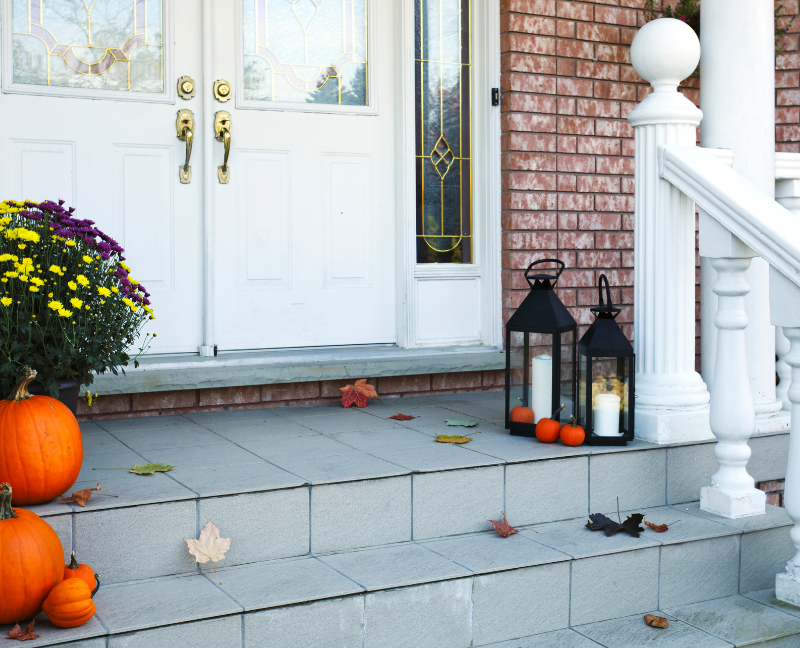
The fall season is when coziness and convenience are of the utmost importance. Utilize this to work to your advantage and spruce up your sofa or armchairs by adding throw pillows and accent pillows in a color scheme inspired by fall. If the floors in your home are hard surfaces like tile or wood, you can also put plush rugs all about the house.
If your home has a fireplace, you should store some wood beside it so prospective buyers might picture themselves snuggling up in front of it on a chilly autumn day. You can suggest to your real estate agent that they light a fire in a gas or electric fireplace during the showing so that the space feels more at home.
Even though summer is gone by, help your outdoor area look more inviting to your buyer. Here are some tips that can help you improve the look on how to stage your home:
Putting one or two fresh pumpkins on your front porch can create the feeling of being at home while adding a splash of color if you wish to decorate the front of your house for fall. However, you need to keep a close eye on the gourd to ensure it doesn't start showing any signs of rotting, as this is a huge red flag for prospective purchasers of homes.
Finally, this is the least valuable way to stage your home. Even though you might enjoy decorating for holidays like Halloween or Thanksgiving, storing your decorations while trying to sell your house is best. Seasonal decorations should not be overdone; some can even turn off prospective homebuyers. Instead, limit your decor to a classic fall motif, such as a wreath or color scheme.
Looking for more fall staging tips? Check these blogs for inspiration:
You may also visit our website for more content like this.
In the first part, we've discussed what home staging is, how home staging might maximize home appeal, and how you can do it. Now, let's learn more valuable tips to help increase your home's value through home staging.
There are so many ways to attract home buyers that it can be overwhelming, but don't worry, we're here to make it easier for you.
Home staging, as mentioned, is one of the most effective ways to increase home value and you can start this by decluttering.
Living Room
Get rid of personal stuff, furniture, and decorations. Add warmth and charm to the area using neutral hues and subtle accents like throw cushions or fresh flowers.
Kitchen
Kitchens are one of the three crucial areas of a property that may make or break a buyer, so they must be functional and clean. Clear surfaces and organize cabinets to create space. Upgrade old fixtures and appliances if needed. Display some nice kitchenware or utensils to make the kitchen feel cozy. Bring in as much natural light as possible and use well-placed artificial lighting to accent the countertop and eating area.
Bedroom
Let's now focus on the bedrooms. The aim is to establish a calm and unwinding atmosphere. Depersonalize and clear the area to start. To make the bed look appealing, ensure the sheets are clean, and add attractive cushions or a throw blanket. Remove any extra furniture to give the impression that the space is more significant. Add soft lighting, like bedside lamps or wall sconces to create a cozy atmosphere. Lastly, check that the closets and wardrobes are tidy and not stuffed with clothing.
Outdoor Spaces
Don't overlook the outdoor spaces. For homes to sell, curb appeal is essential. Ensure that the front of the property is kept up and has well-kept community spaces or landscaped gardens, and perhaps some potted plants or flowers to provide some color.
Any outside living areas, such as patios or balconies, should be cleaned and cleared of clutter. Set up some outside furniture to establish a warm and cozy ambiance. If you want to showcase the space's best qualities, consider installing outdoor lighting, especially if you intend to display the house at night.
Finally, staging various parts of a property involves close attention to detail and a concentration on developing a warm and inviting ambiance. The best qualities of each space can be highlighted by decluttering, organizing, and adding appropriate finishing touches. This will help prospective buyers picture themselves residing in the area. The idea is to make the space neutral and welcoming so potential purchasers may imagine themselves making it their own.
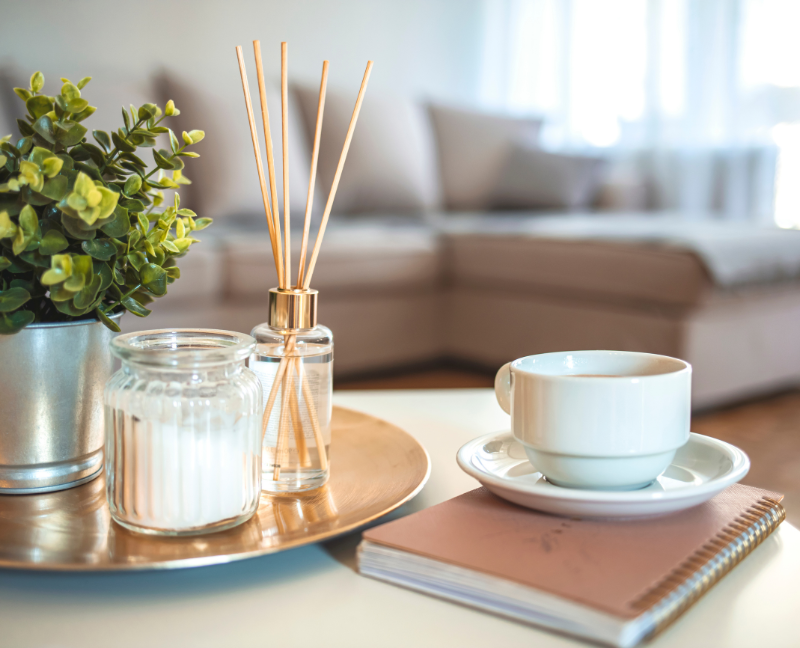
Property owners have two alternatives available to them regarding home staging: staging the home themselves or hiring an expert. Both ways have advantages and disadvantages, and the choice should ultimately depend on various considerations, including time, money, and skill. Let's talk about each alternative's benefits and drawbacks so you can decide which one to go with.
Pros & Cons Of DIY Staging
DIY staging can help save money for property owners with time, ingenuity, and effort. It also avoids additional costs from hiring professional stagers.
This also lets you customize the design to your preference. However, it might demand interior design and real estate marketing skills to succeed, however, there are many resources online that can help with this.
Pros & Cons Of Hiring A Professional Home Stager
Working with a professional home stager can provide considerable skill and experience. Their attention to detail lets them showcase your home's best characteristics while minimizing its drawbacks. They may have furniture, accessories, and decor items to make your home shine.
Professional stagers know the local market and buyer preferences, which can boost your chances of selling your property quicker and for more. However, one must consider the price of hiring a professional stager. Their fees depend on your property's size, condition, and staging needs. The return on investment may make hiring a professional stager worth it for some homeowners. In addition, skilled stagers can save you both stress and time by renting furniture, arranging, and designing the room.
Whether you do it by yourself or hire a professional, home staging takes time, money, and effort; however, with so many incredible benefits, it proves to be a great investment! In such a competitive market, implementing this to sell your home could be a great help!
Home staging refers to getting a house ready for the market by decorating and organizing its contents in such a way that it would appeal to prospective buyers.
In this post, you will learn how to do home staging and the essential details and tips you need to know when it comes to home staging.
Home staging is not a requirement however, it is a helpful step that can create a warm, inviting, and visually appealing setting, enabling potential purchasers to picture themselves living there.
The purpose of home staging is to draw attention to the positive aspects of a given property.
When staging various parts of a house, some helpful suggestions and methods can help increase the property's appeal to prospective purchasers.
Getting rid of the clutter in the room and making it look and feel tidy are critical steps in the process. Take out all of your personal belongings (such as picture frames and medals), any surplus furniture, and any decorations that aren't necessary. Doing this allows potential buyers to visualize what they want to do in the space as they are not distracted by a crowded layout or any personal belongings.
Another way to improve the place is by adding warmth and personality to the room. Use neutral hues and stylish accessories, and place the furniture in a way that encourages flow and conversation.
Improving a property's appearance from the street is another strategy to stage it so that it seems as appealing as possible. This includes improving the property's exterior, such as landscaping, and ensuring the entry is inviting. First impressions are extremely important, and a properly maintained and aesthetically pleasing surface can significantly impact how a prospective buyer perceives the house.

Home staging also requires selecting and arranging furniture. Property owners should use furniture that matches the space's style and size. Organizing furniture to showcase space functioning and flow can also help buyers imagine living in the house they buy. A friendly, lived-in sense is crucial, but buyers need space to explore and visualize their stuff.
Lighting is essential in home staging. The vendors should maximize the natural light by drawing back the drapes and shutters and ensuring the windows are spotless. In addition, the strategic application of artificial lighting, such as lamps and spotlights, can contribute to developing a cozy and welcoming ambiance. In general, well-lit rooms give the impression of being more prominent and are more desirable to prospective buyers.
Furthermore, finishing touches and a friendly atmosphere can boost a property's attractiveness. This can be done with fresh flowers, scented candles, and decorative items. Cleaning and maintaining the property might improve purchasers' perception of its desirability.
Home staging may dramatically raise the property's perceived worth and attract potential purchasers, and this can be done by showing the home in the best possible light. Learn more tips on how to do home staging in Part 2.
Autumn in Indiana is a beautiful season. However, the outdoors of your home may start to take on an uninspiring appearance as fall approaches, when the leaves of surrounding trees and shrubs begin to fall, and the summer blooms die off.
On the other hand, if you put in a little extra time and work, you can make it look brand new again.
How to improve your home during this season, you ask? One of the easiest and not to mention, cheapest things to do is to give your house a spring cleaning to increase its appeal for the fall season.
Here are eight things you can do to revamp your home during the fall season:
Even though the vibrant colors of the fall foliage contribute a lot of appeal to the area, your grass will still need some maintenance to continue looking fantastic until it snows.
Rake the leaves periodically to keep the accumulation of fallen leaves under control, and then either compost them yourself or bag them and bring them to your community's recycling center to be composted.
After raking the leaves off the lawn, you should fix any brown areas in the grass and edge the lawn to look nice and tidy.
Shrubs and trees appear disorganized when they drop their leaves. Bring out the pruning shears and trim the trees, shrubs, and bushes in your yard to give it a well-kept appearance.
It's essential to eliminate any problem branches immediately before winter winds, snowfall, and ice weight cause them to fall and perhaps harm your home.
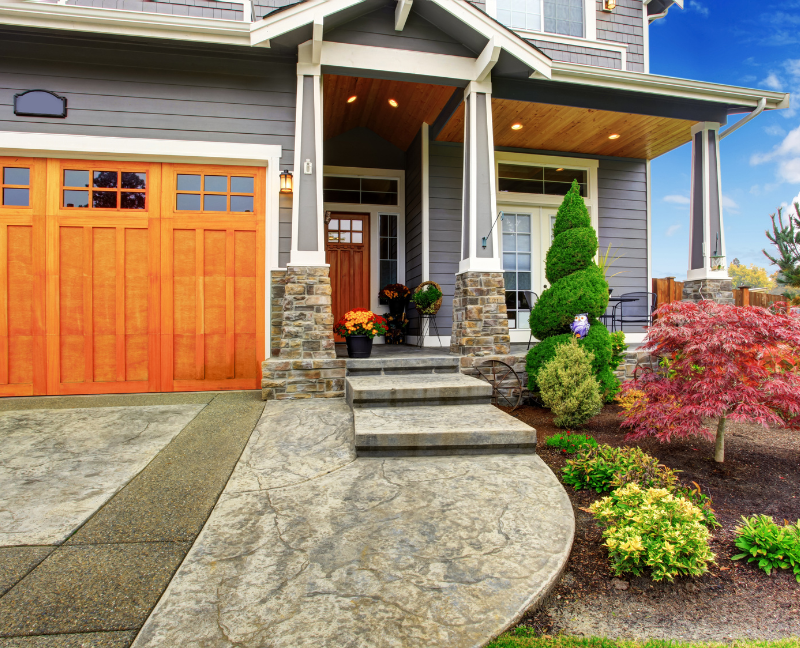
After annual flowers fade, dig up and destroy the plants, plucking any leftover weeds. Blow dry leaves from flower bed corners with a leaf blower.
After clearing out summer plants, add some fall-blooming ones to your yard for color.
Fall-colored mums, marigolds, flowering kale, and others will enhance your display. Finalize your planting beds with 2-3 inches of fresh mulch for a clean look.
Curb appeal and safety depend on adequate outdoor lighting when the sun rises later and sets sooner. Place lanterns or flood lights near entrances and decorate pathways. Try landscape lights in your yard and gardens.
Cleaning outdoor light fixtures makes them sparkle at night. Take glass shades and thoroughly clean them—clean metal and plastic with a soft rag and all-purpose cleanser.
Clear leaves and other debris from your gutters to improve your home drainage and shield your home from water damage. Gutter cleaning is necessary before winter weather arrives because clogged gutters can result in ice dams. Hire a professional to complete this task to save time and the risk of climbing the ladder yourself.
Pressure washers or garden hose jet nozzles can remove dirt from the siding and foundation to improve curb appeal. Meanwhile, pressure wash the sidewalks and driveway. Clean windows both inside and out. Autumn is a good season to repaint fading or damaged walls.
Sweep your porch to remove summer detritus. Fix or replace loose railings and steps. Consider painting or staining your worn porch floor and stairs. If your porch furniture needs a fresh color, paint it too. Lastly, paint the front door to match but contrast your siding and trim.
Add some fall decorations to your yard, which will look less festive with empty trees and plants. Add a fall wreath to the front entrance and potted seasonal flowers to create a comfortable atmosphere. Some pumpkins or gourds and an autumn welcome mat will enhance your doorstep.
Some decorations may improve your home from fall curb appeal. However, too much decor might make your home look cluttered. The best fall curb appeal is simple.
If you want to see more fall inspirations, you can check the following:
Thank you!
As the weather cools, preparing your home for falling leaves, cooler temperatures, and, eventually, winter storms is important.
Tackling a few fall home maintenance activities now can help prevent problems later in the season, allowing you to enjoy all you love about autumn without anxiety.
Most of the home-prepping activities listed below are well beyond the capabilities of the ordinary homeowner, but hiring a professional to undertake them can be well worth the cost.
You'll save money in the long run by avoiding costly (and perhaps deadly) home damage.
Follow our fall home maintenance checklist to discover how to clean gutters, roofs, and fireplaces, among other things.
Maintaining the roof's drainage system is crucial because it removes hundreds of gallons of water from the exterior of your home and foundation walls each year.
Damaged gutters can cause basement flooding and exterior damage. Clogged gutters lead to rust and corrosion. The first homeowner prep is to clean and mesh-guard the gutters before the leaves fall to prevent debris buildup.
A home with window and door air leaks is like an unbuttoned coat. Sealing drafty homes with caulk and weatherstripping can cut heating costs by 20%. Weatherstripping is the cheapest way to lower heating and cooling expenditures.
This simple substance minimizes drafts and makes your home warmer year-round. However, weatherstripping deteriorates, so check it regularly. Closing a door or window on paper may indicate a weatherstripping issue.
Check missing or damaged caulk around windows, doors, electrical, cable, phone, and gas access points in addition to weatherstripping. Use caulk to fill gaps. Replacement windows may be necessary if drafts persist. Glass with several panes, spacers, or filler gasses may fix these issues. A professional can replace inefficient windows with more energy-efficient ones to improve comfort and lower heating costs.
A leaky roof is one of the worst homeowner issues. After dripping begins, pinpointing the source can take a while. The homeowner prep is to fix them in autumn before ice, and even winter winds convert problems into disasters.
Make a top-to-bottom roof inspection with binoculars. Check wind and cracks in ridge shingles. Valley and vent/chimney metal flashing should be checked for damage.
Also, examine the roof for missing, curling, or broken shingles. Large accumulations of granules in your gutters indicate that your roof is losing its covering, which can lead to more significant issues. Ensure gutters flow smoothly.
Want to see more home repair and maintenance content? Check these:
Repairs that Will Cost You When Buying a Home
With Proper Protection and Maintenance, Your Home Can Last Long
7 Home Remodel Tips For Beginners
Protect exterior faucets and in-ground irrigation systems from freezing in cold weather. To drain the pipe, close any outside faucet, shut off valves, and open the tap. Several home centers sell styrofoam faucet covers for faucets without shut-off valves or "freeze-proof" materials. Follow manufacturer draining and winter protection instructions to freeze-proof an in-ground irrigation system.
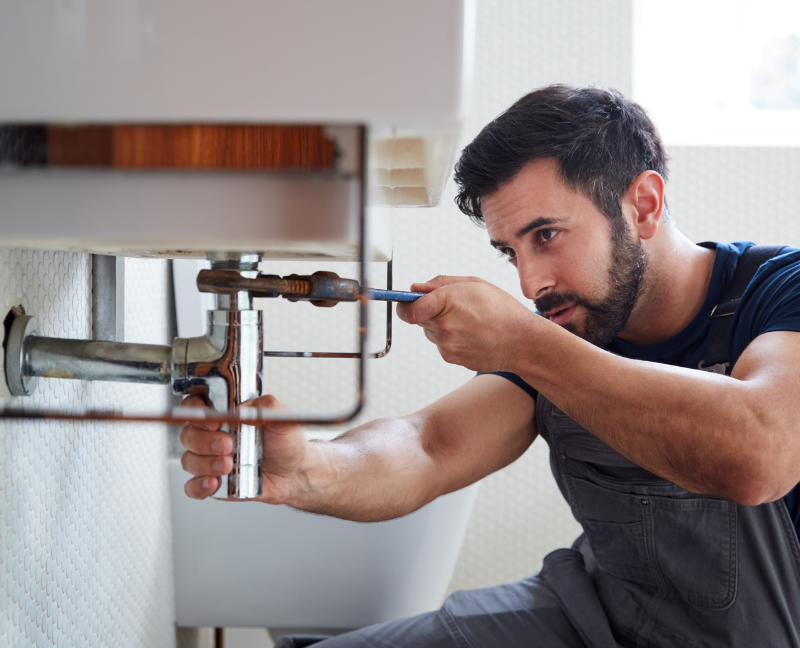
Furnace filters collect dust from your home. Other than a dirty furnace, clogged filters can cause rising utility expenditures. However, you can regularly clean the filters to avoid this.
You can either choose disposable filters that can only be vacuumed once and then replaced or use foam filters that you can vacuum any time and only need to be replaced once broken.
When cleaning foam filters, remove and clean metal or electrostatic filters with a strong water spray and vacuum using a gentle brush.
Get a professional heating system checkup once a year. Consider scheduling this task early in the fall before the heating season to prevent the last-minute rush.
Here are signs you need a professional check sooner:
If you rarely use your fireplace, examine it annually for damage and risks. Find creosote, a combustible wood byproduct, in the flue. An overloaded flue or chimney might start a fire. Inspect your chimney annually for creosote. Once each cord of wood is burned, examine the fireplace or wood stove flue if you use it often.
Chimney sweeps are great for inspecting the complete chimney system. With a bright flashlight, shine up the flue to look for deposits nearing 1/8 inch thick. A chimney expert should remove these deposits.
Here are some things you can do:
These are just some of the home-prepping activities you can do this fall. Watch out for Part 2 by clicking this link.

8313 W. 10th St
Indianapolis IN 46234
dennis@indyhomepros.com
317-316-8224